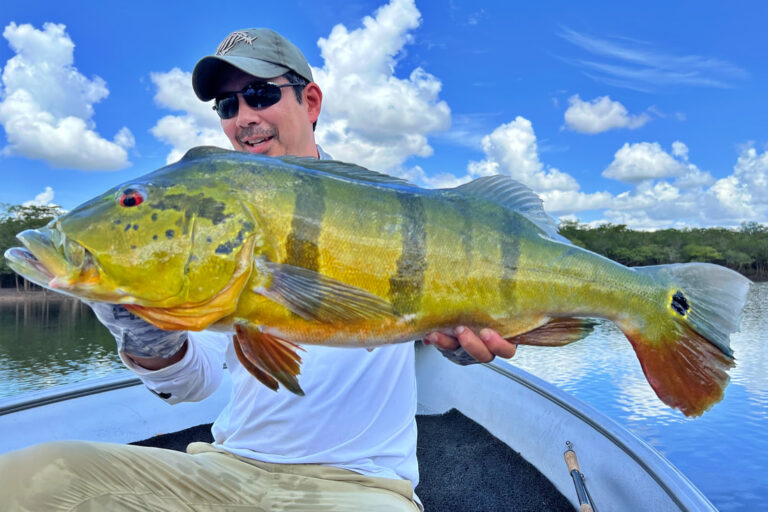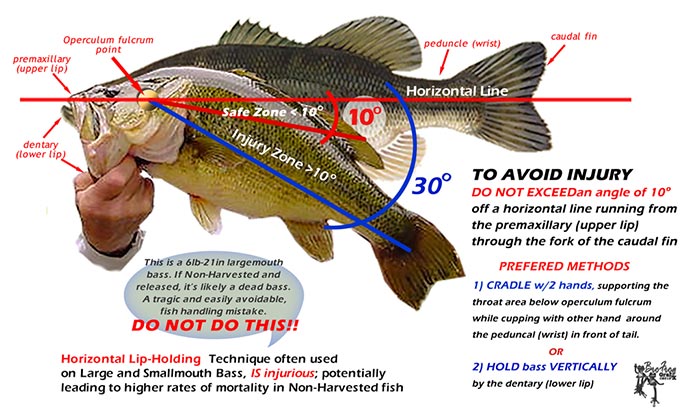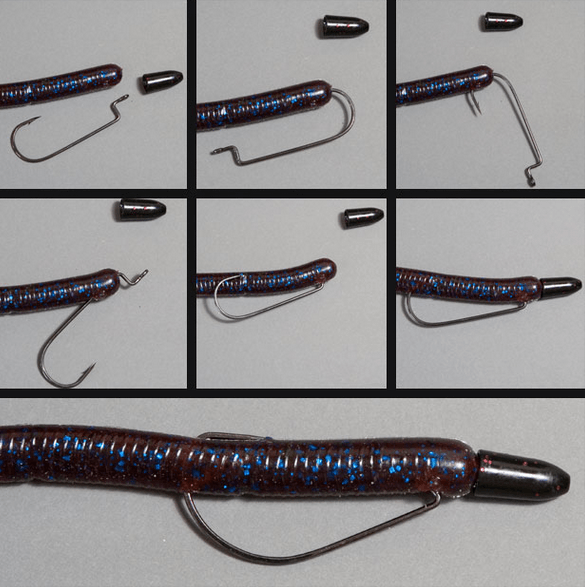How to Weigh a Bass
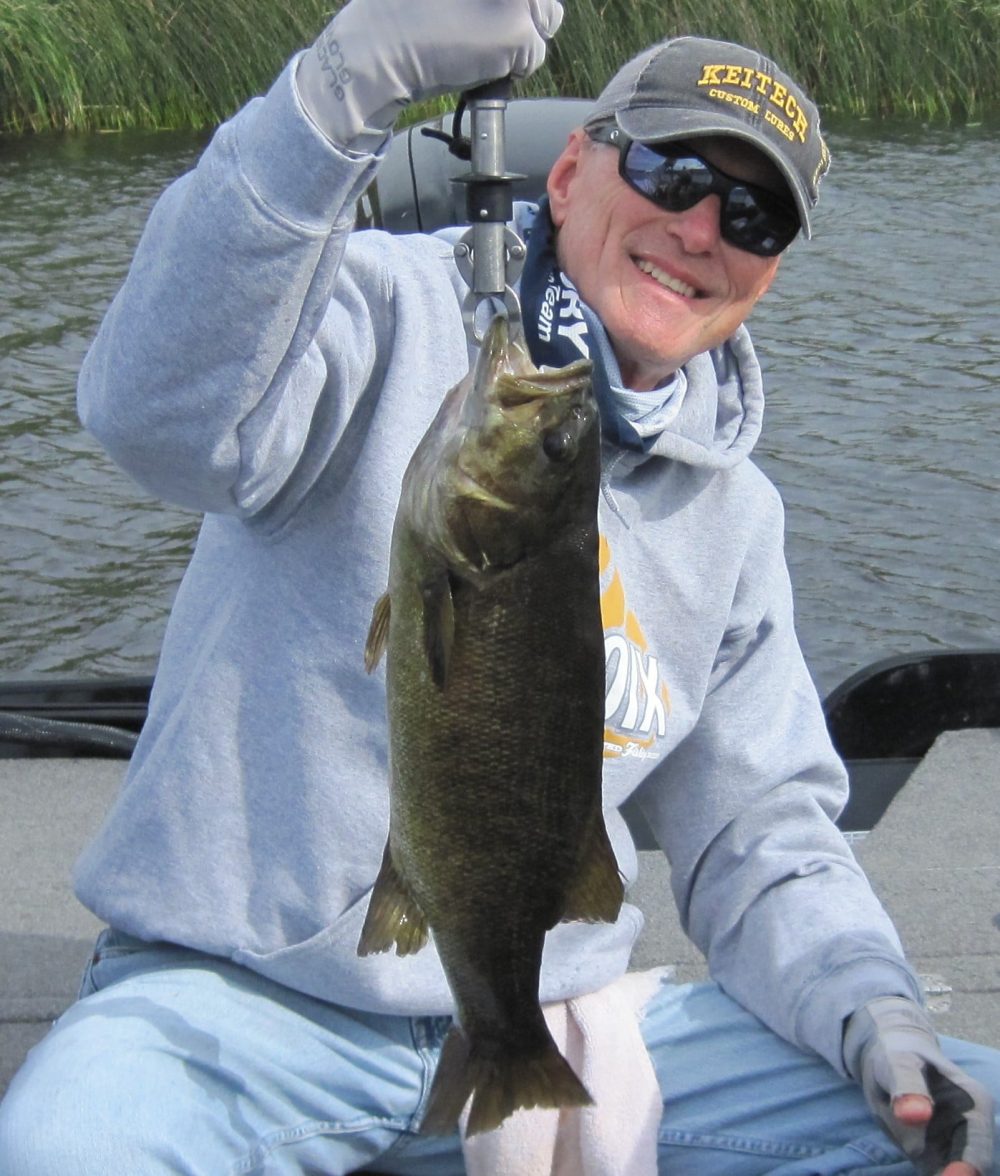
To weigh a bass, use a fishing scale to hang the fish by its lip. Ensure the scale is zeroed before weighing for accuracy.
Weighing a bass correctly is essential for anglers who track their catches or participate in tournaments. An accurate scale that can hang the fish by its lip without causing harm is indispensable. It’s equally important to ensure the fish’s weight doesn’t include anything that could skew the reading, such as water or debris.
Quick and precise measurement allows for the immediate release of the bass, contributing to conservation efforts and keeping fish populations healthy. As fishing continues to be a popular sport, having the ability to quickly and effectively weigh your catch is a skill that every angler should master, not only for personal records but also to maintain the integrity of the sport.

Credit: 1source.basspro.com
The Importance Of Accurate Weighing
Accurate weighing is crucial in bass fishing. It upholds fair play within the community. Sportsmanship demands honesty; this extends to recording accurate weights. Competitors need to trust each other’s catches.
For competition data, precise measurements are vital. They help determine winners fairly. They also track bass populations over time. This data is essential for conservation efforts. Ensuring the responsible management of fish stocks is part of ethical fishing.
Tools Of The Trade
Anglers need the right tools for weighing bass accurately. Fishing scales come in various types, each with unique features. Some popular options are digital scales, which offer precision, and spring scales, known for their durability. For a swift check, anglers often use lip grip scales, which can also hold the fish securely.
| Type of Scale | Key Feature |
|---|---|
| Digital Scale | Precise measurements |
| Spring Scale | Long-lasting |
| Lip Grip Scale | Secure fish handling |
To ensure accuracy, regularly calibrating your scale is a must. Start with a known weight to check the scale’s precision. If numbers don’t match, adjust the scale until it displays the correct weight. This simple step guarantees reliable results every time.
Preparation For Weighing A Bass
Proper handling of a bass is vital before weighing. Always wet your hands to minimize slime coat damage. Use a gentle grip around the bass’s lower jaw. Holding the fish horizontally supports its internal organs.
Ensuring the health and survival of the bass matters most. Use a reliable scale for a quick weigh-in. Return the bass to water promptly to reduce stress. This approach helps to maintain bass populations in natural habitats.
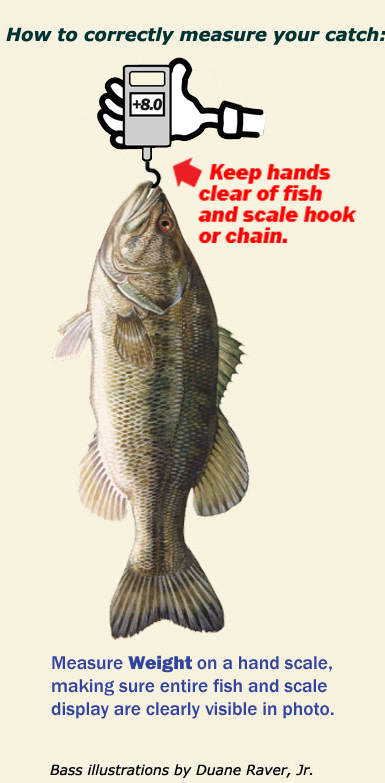
Credit: www.sportfishingconservancy.org
The Weighing Process
Filling a weigh bag with water helps protect the bass during weighing. Place the bass gently into the bag. Make sure the bag is free from any items that could affect the weight. Close the bag securely before lifting.
To read the scale correctly, ensure it is at zero before placing the weigh bag on it. Do not shake the scale, as this can lead to incorrect readings. Wait for the reading to stabilize for an accurate weight.
Recording the weight is crucial for tracking the health of the bass population or for tournament purposes. Use a notepad or a digital device to log the weight immediately. Double-check the weight on the scale before writing it down to avoid mistakes.
After The Weigh-in
Ensuring a safe release of the bass after weighing is crucial for its survival. Gently place the fish back into water. Hold the bass horizontally. Support its belly with your hands. Wait until it swims away on its own. Do this quickly to minimize stress on the fish.
Proper release techniques contribute to conservation efforts and sustainability of bass populations. By practicing these methods, you help maintain the health of the ecosystem. Remember to revive the fish if it seems sluggish. Moves it back and forth to increase water flow over its gills.
Tips And Tricks For Accurate Measurements
Zeroing the Scale with a Wet Weigh Bag is crucial for getting the right weight of a bass. Before placing the fish, wet the bag to ensure it doesn’t soak up water while weighing. This keeps the bag’s weight constant. Always reset the scale to zero with the wet bag on it. This way, you start with an accurate baseline, making sure you only measure the weight of the fish.
Avoiding Common Mistakes means handling the bass carefully. Do not place the fish on a hard surface without the bag. Gentle handling is important to keep the bass safe. Check the scale’s batteries before starting. A failing battery can lead to incorrect readings. Always read the scale instructions beforehand. Use the same scale for consistency and regularly calibrate it for precision.
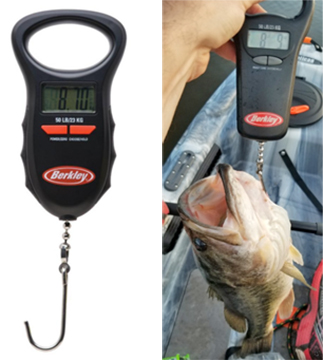
Credit: www.trophycatchflorida.com
Frequently Asked Questions For How To Weigh A Bass
How Do You Weigh A Bass Without Hurting It?
To weigh a bass without causing harm, use a fish-friendly gripper with a built-in scale. Support the bass horizontally, distribute its weight evenly, and quickly return it to the water.
How Do You Weigh A Largemouth Bass?
To weigh a largemouth bass, use a reliable fish scale. Grip the bass gently by its lower jaw and hook the scale’s clasp to the gripper. Ensure the fish is hanging freely, then read the weight. Always support the bass horizontally if using a handheld scale to prevent injury.
How Can I Weigh My Bass Without A Scale?
To weigh a bass without a scale, use a measured length-weight chart. Measure the bass from jaw to tail, then match the length to the estimated weight on the chart.
How Do You Weigh Fish On A Scale?
To weigh fish on a scale, zero the scale, place fish on the platform, and record the weight. Ensure the fish is still, and the scale is accurate for precise measurements.
Conclusion
We’ve covered the essentials of weighing a bass accurately and ethically. Remember, precision matters for records and conservation efforts. Practice these techniques next time you’re out fishing. With the right tools and methods, you’ll get the perfect weight, every time.
Tight lines and happy fishing!
